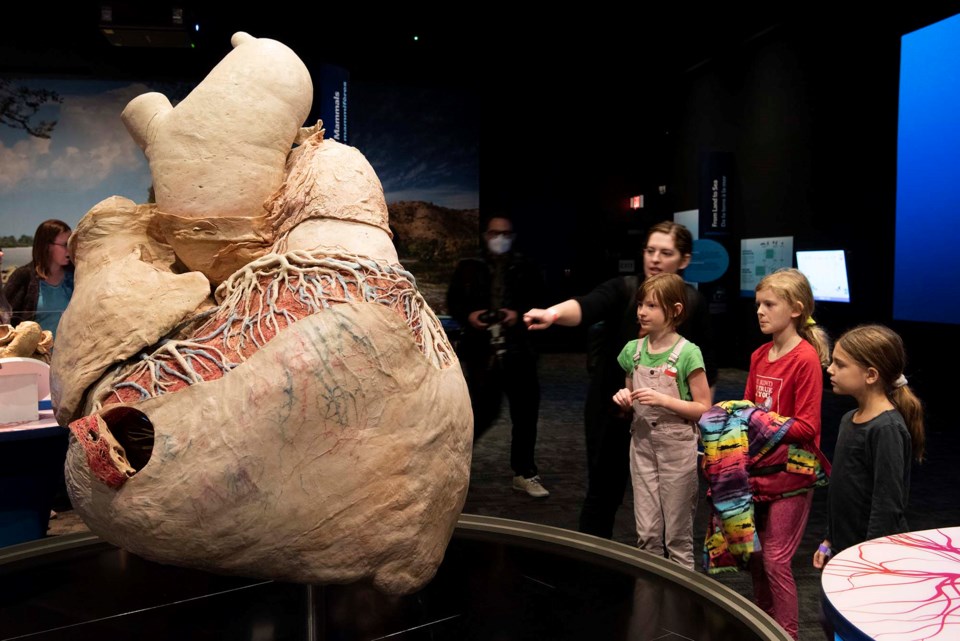She was bigger than two buses and weighed about as much as the population of Legal.
Blue the blue whale died eight years ago off the coast of Newfoundland. Now, St. Albert science fans can get up close and personal with her, as her bones swim into an Edmonton science centre.
Out of the Depths: the Blue Whale Story opened Oct. 29 at the Telus World of Science in Edmonton. The travelling exhibition, making its first stop outside of the Royal Ontario Museum, explored the science and mystery of the biggest animal on Earth: the blue whale.
The centrepiece of the exhibit was a female blue whale skeleton dubbed “Blue,” which, at 23.7 m, was longer than two St. Albert Transit electric buses. The whale it came from weighed 90 tonnes, equivalent to about 1,200 people (a bit less than the population of Legal, AB).
“Just seeing the scale of it is overwhelming,” said Telus World of Science president Alan Nursall, speaking next to the stupendous skeleton on Oct. 28.
The exhibit also features the world’s only preserved blue whale heart. About the size of a cow, this massive organ pumped about 150 litres of blood with every beat — enough to fill a typical curbside garbage bin — yet in some cases pumped just twice a minute.
“The aorta coming out of the heart is big enough for me to put my head in,” Nursall said.
“It’s a massive, massive structure.”
Big Blue and you
The story of this exhibit started in 2014 when nine blue whales died after being trapped under the ice near Newfoundland, Nursall said. Two of those whales washed ashore — a rare event, as whale corpses normally sink — and the Royal Ontario Museum received federal permission to collect them for study. The exhibit’s skeleton and heart came from those whales.
Guests at the exhibit can learn about the brains, blowholes, and baleen of blue whales, with models and real samples of each available to touch. They can listen to whale songs, play a krill-collecting game, and see how many people can fit into a blue whale’s jaws (at least 30 children, as guests demonstrated for media on Oct. 28).
Blue whales are the biggest animals known to humans, said Telus World of Science staff scientist Marie McConnell. They’re not the longest (that’s the bootlace worm at 55 metres) or the tallest (sauropods at 18 m), but they are the heaviest, tipping the scales at up to 150 tonnes (about 12 St. Albert electric buses).
McConnell said blue whales play vital roles in the ocean ecosystem, particularly through their poop. Whale excrement feeds phytoplankton, which produce about half of the oxygen humans breathe. Phytoplankton in turn feed the krill whales eat and turn into poop. The exhibit talks about how whale excrement also serves as a massive carbon sink, with each blue whale producing enough of it in its life to offset the annual CO2 emissions of 1,000 people.
Humans hunted blue whales almost to extinction in the last century, and we owe it to them to give them a chance for a comeback, Nursall said. The exhibit examines threats to whales such as shrinking sea ice and noise pollution, and the national and international efforts to restore whale populations.
Alberta might be pretty far from where whales live, but McConnell said our actions here still affect them.
“Anything that happens to our river valley ecosystems happen to our oceans,” she said.
McConnell said Albertans can help protect blue whales by keeping trash and pollutants out of rivers so they don’t end up in the oceans.
The exhibit runs until April 10, 2023. Visit telusworldofscienceedmonton.ca for details.




